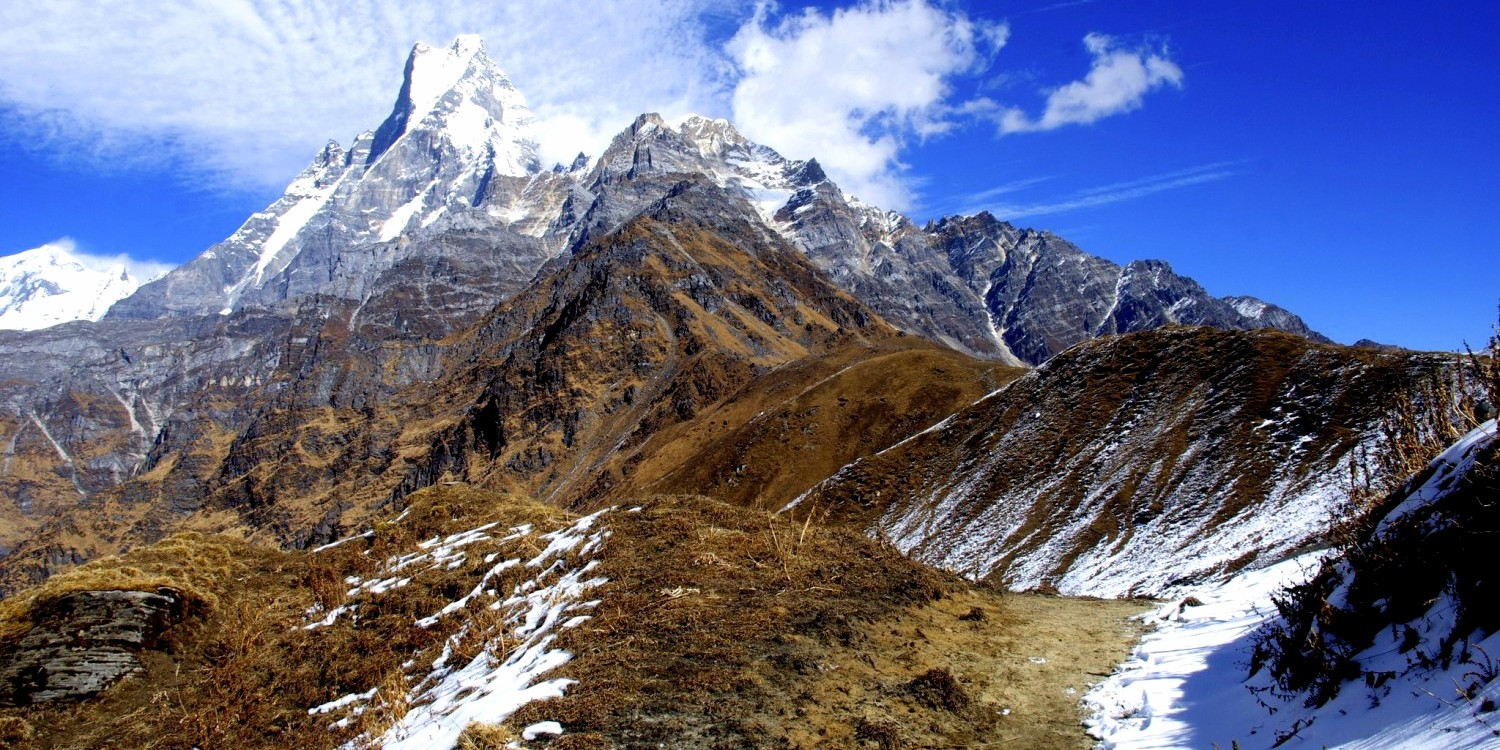Manaslu Circuit Trek
The Manaslu Circuit Trek is one of Nepal's most revered and challenging treks, taking adventurers around the world's eighth highest mountain, Manaslu, which stands majestically at 8,163 meters (26,781 ft). This trek is renowned for its remote and untouched trails that offer a much more secluded journey compared to the busier paths of the Everest or Annapurna regions.
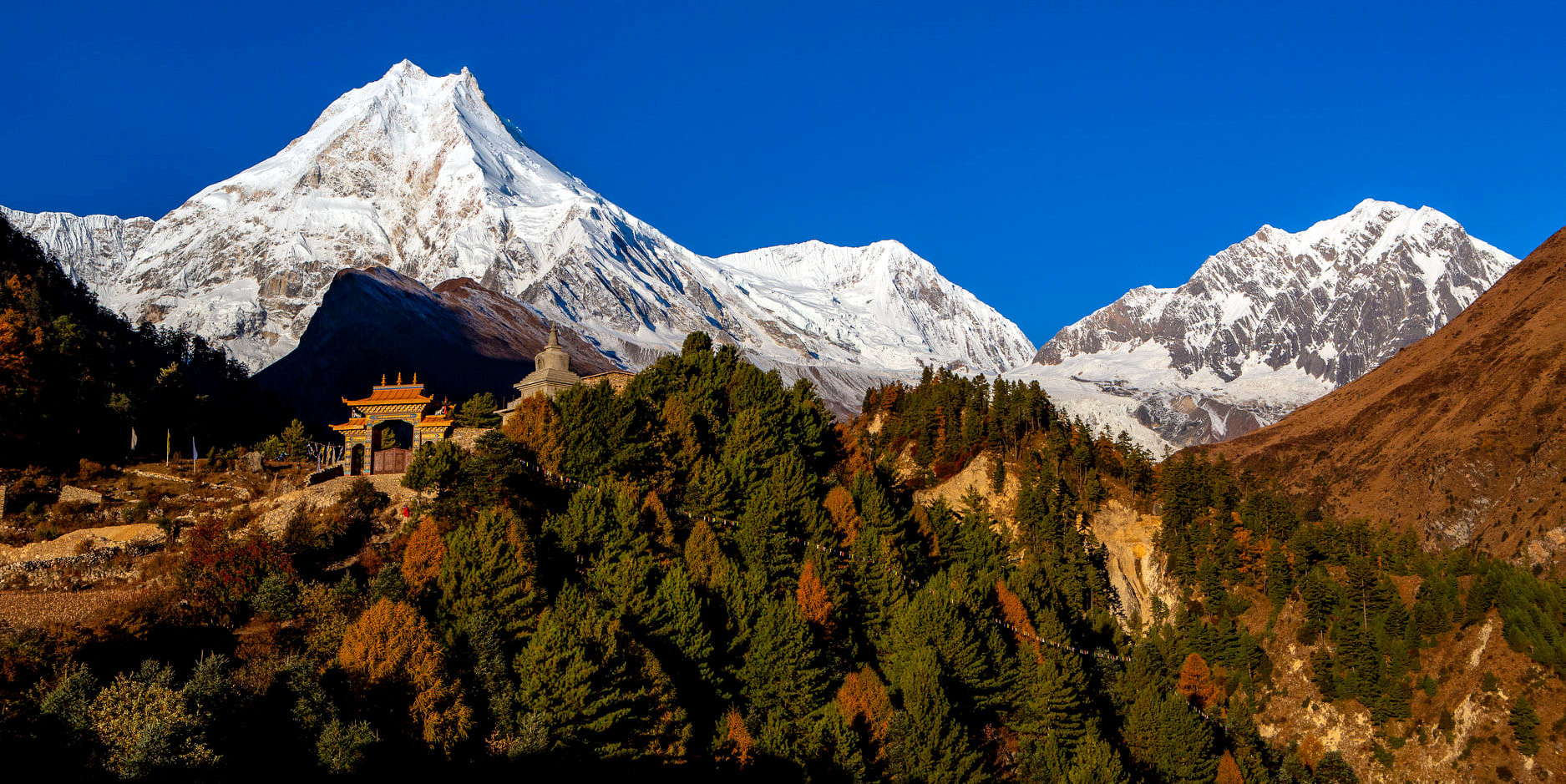
Highlights of the Manaslu Circuit Trek
-
Stunning Landscapes: Trekkers will encounter diverse terrains, including lush subtropical forests in the lower reaches and stark, rocky landscapes as they ascend.
-
Cultural Experience: The circuit passes through ancient Buddhist regions, with colorful monasteries, chortens, and mani walls enriching the trail.
-
Larkya La Pass: The highest point of the trek at 5,106 meters (16,752 ft), crossing this pass is both a challenge and a highlight, offering breathtaking panoramic views of Himalayan giants like Himlung Himal, Cheo Himal, and Kang Guru.
Trek Overview
-
Duration: Typically 14-20 days, depending on the chosen itinerary and pace.
-
Difficulty: Challenging, due to its length, high altitude, and the need for proper acclimatization.
-
Best Season: Spring (March to May) and autumn (September to November) are ideal, offering clear skies and stable weather.
The Manaslu Circuit Trek promises an enriching experience filled with adventure, scenic beauty, and cultural immersion, making it a must-do for serious trekkers around the globe.
Kanchenjunga Base Camp Trek
The Kanchenjunga Base Camp Trek is one of the most exhilarating and remote treks in Nepal, offering the rare opportunity to experience pristine wilderness and stunning views near the world’s third highest mountain, Kanchenjunga, which rises majestically to an elevation of 8,586 meters (28,169 ft). This trek is less frequented by tourists, providing a solitary journey through one of the most untouched areas of the Himalayas.
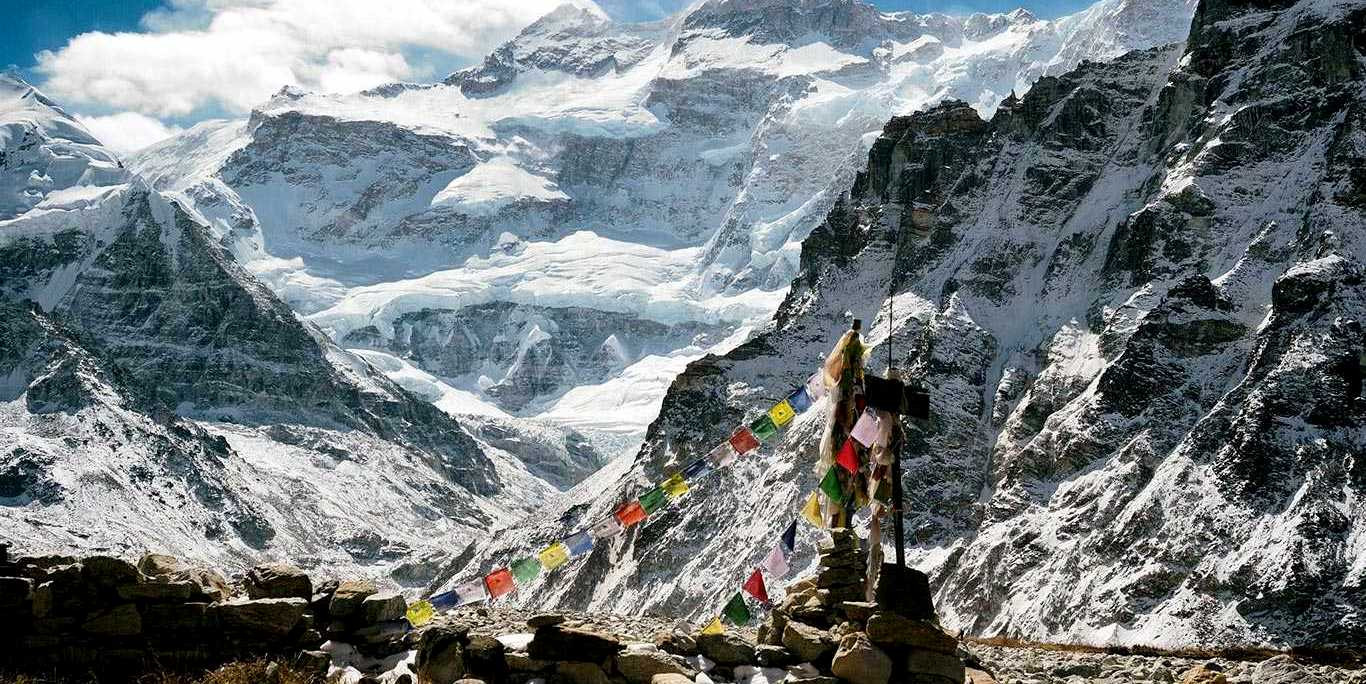
Highlights of the Kanchenjunga Base Camp Trek
-
Spectacular Mountain Vistas: The trek offers dramatic views of Mt. Kanchenjunga, along with glimpses of other towering peaks such as Jannu and Makalu.
-
Rich Biodiversity: The route traverses the Kanchenjunga Conservation Area, which is home to a rich array of flora and fauna, including the elusive snow leopard and red panda.
-
Cultural Diversity: Trekkers will encounter a mix of ethnic communities, including Sherpa, Rai, and Limbu, each with distinct customs, traditions, and festivals.
Trek Overview:
-
Duration: Typically 20-24 days, depending on the chosen route and pace.
-
Difficulty: Very challenging, given its length, remote setting, and high altitude with substantial elevation gains and losses.
-
Best Season: Spring (March to May) and autumn (October to November) are the best times to undertake this trek, as the weather is generally clear and conducive for trekking.
The Kanchenjunga Base Camp Trek is an adventure of a lifetime, promising solitude, breathtaking natural beauty, and a deep cultural insight into the lives of Himalayan communities. It's an ideal choice for experienced trekkers looking to escape the more crowded trails and immerse themselves in the raw beauty of the Himalayas.
Dhaulagiri Circuit Trek
The Dhaulagiri Circuit Trek is an exhilarating and extremely challenging high-altitude trek in the Nepalese Himalayas. This trek circles Mount Dhaulagiri, the world's seventh highest peak, standing at 8,167 meters (26,795 ft). Known for its rugged and demanding routes, this trek is suitable for seasoned trekkers seeking a truly adventurous and less trodden path.
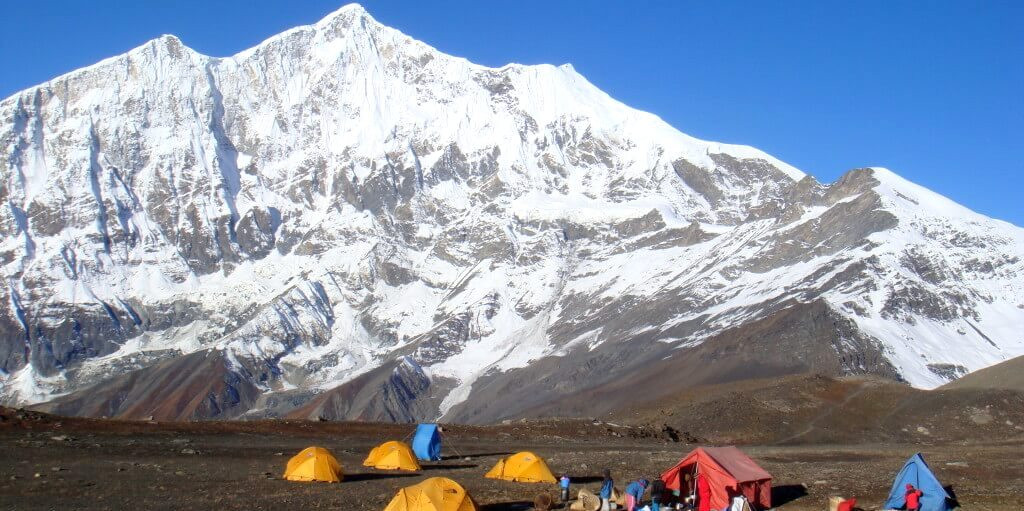
Highlights of the Dhaulagiri Circuit Trek
-
Remote and Challenging Routes: The trek traverses some of the most isolated and rugged terrains in Nepal, offering a profound sense of adventure.
-
Spectacular Mountain Scenery: Stunning views of Dhaulagiri and other nearby peaks like Annapurna and Nilgiri.
-
Icefall and Glacier Navigation: The trek involves crossing the challenging Dhaulagiri icefall and multiple high mountain passes.
-
French Col and Dhampus Pass: Two of the high passes on the trek, offering panoramic views of the surrounding peaks and valleys.
Trek Overview
-
Duration: Typically ranges from 14 to 21 days, depending on weather conditions and the pace of trekking.
-
Difficulty: Very challenging due to its technical paths, high-altitude passes, and the need for proper acclimatization.
-
Best Season: The best times for this trek are from late September to October and from April to early May, when the weather is mostly stable and visibility is clear.
The Dhaulagiri Circuit Trek promises an unforgettable adventure filled with challenges and breathtaking natural beauty. It stands as a test of endurance and will, making it a rewarding experience for those who dare to take it on.
Upper Dolpo Trek
The Upper Dolpo Trek is one of the most remote and challenging treks in Nepal, offering an extraordinary journey into the isolated landscapes of the Upper Dolpo region, which was only opened to trekkers in the late 1980s. This area is known for its rugged beauty, steeped in ancient Tibetan culture, and has been the backdrop for the famous movie "Himalaya."
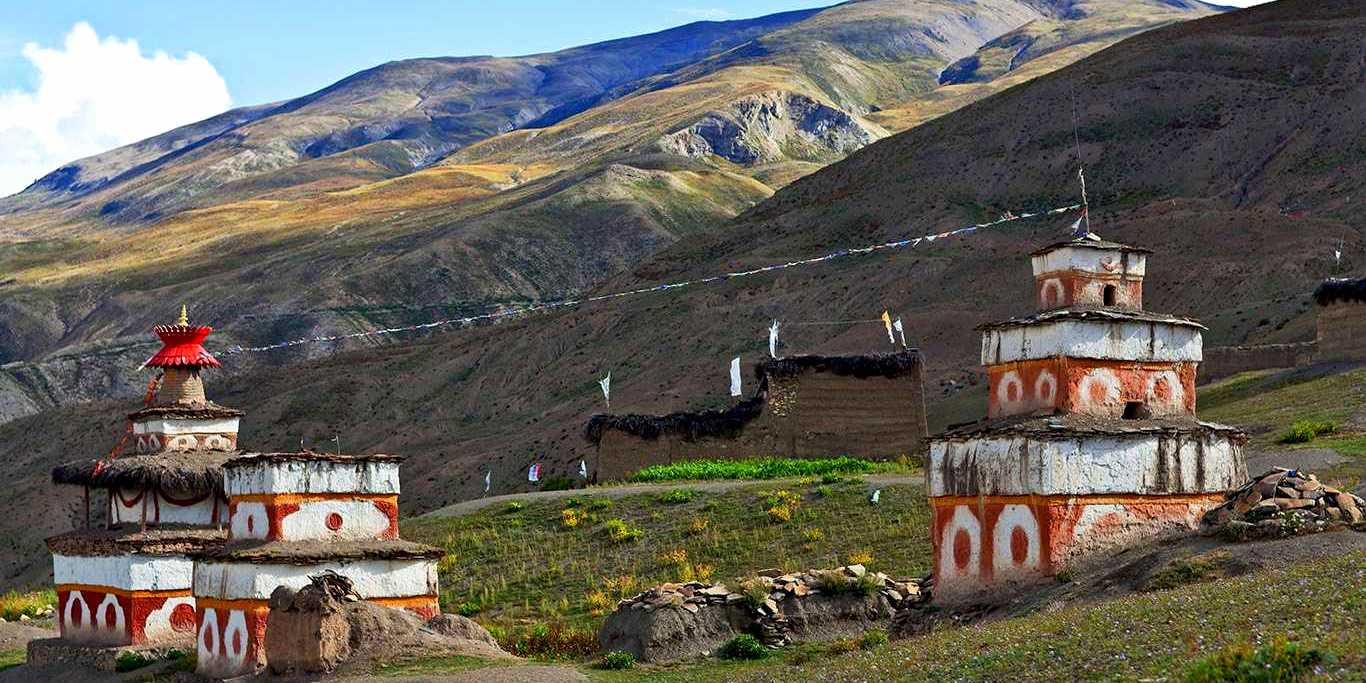
Highlights of the Upper Dolpo Trek
-
Shey Phoksundo Lake: Visit the stunningly beautiful Shey Phoksundo Lake, renowned for its deep blue and emerald green waters.
-
Ancient Monasteries: Explore centuries-old monasteries like Shey Gompa, which is considered a spiritual heart of the region.
-
Rare Fauna and Flora: The trek passes through Shey Phoksundo National Park, home to exotic wildlife including the snow leopard and blue sheep.
-
Tibetan Culture: Experience the authentic and preserved Tibetan culture of the Dolpo people, who follow Bon Buddhism, predating Tibetan Buddhism.
Trek Overview
-
Duration: Typically 19-28 days depending on the specific route and side trips.
-
Difficulty: This trek is considered very challenging due to its high altitudes, remote location, and the lack of modern facilities.
-
Best Season: The best months to embark on the Upper Dolpo Trek are from May to September, as the region remains largely cut off by snow for the rest of the year.
The Upper Dolpo Trek is a journey through time, offering a glimpse into a way of life that has remained unchanged for centuries amidst some of the most stunning and wild landscapes in the Himalayas. It's an unforgettable adventure for those looking to explore beyond the beaten path and experience profound solitude and beauty.
Makalu Base Camp Trek
The Makalu Base Camp Trek is a remarkable journey into the heart of the Himalayas, leading to the base of Mount Makalu, the fifth highest mountain in the world at 8,485 meters (27,838 ft). This trek is known for its remoteness and the extraordinary variety of ecosystems one traverses—from lush rhododendron forests to stark, high-altitude landscapes.
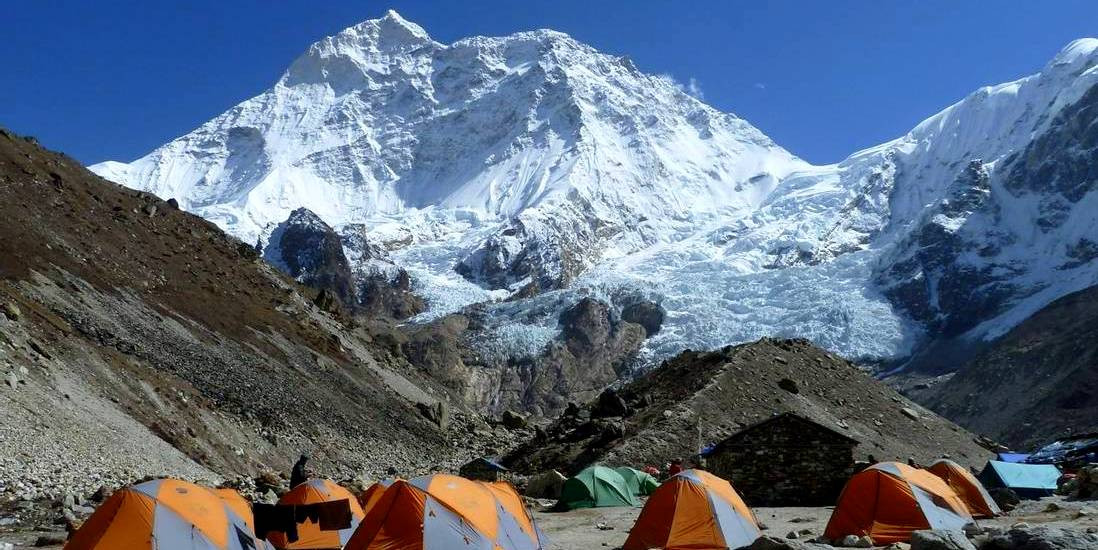
Highlights of the Makalu Base Camp Trek
-
Diverse Ecosystems: The trek passes through the Makalu Barun National Park, which showcases a stunning array of biodiversity, including several rare and endangered species of flora and fauna.
-
Stunning Views of Makalu: The trek offers up-close views of Mount Makalu, along with other towering peaks like Chamlang and Baruntse.
-
High Altitude Terrains: Experience the unique landscapes of the Barun Valley, which features high waterfalls, deep gorges, and beautiful glaciers.
-
Traditional Villages: Encounter the cultural richness of rural Nepalese communities living in isolated high-mountain villages.
Trek Overview
-
Duration: Typically 16-23 days depending on the specific route and pace of trekking.
-
Difficulty: This trek is considered strenuous due to its remote location, high altitude, and significant elevation gains and losses.
-
Best Season: The best times to undertake this trek are during the spring (March to May) and autumn (September to November) months when the weather is generally clear and stable.
The Makalu Base Camp Trek offers an unforgettable adventure for those looking to experience the less traveled paths of the Himalayas, filled with natural beauty, challenging treks, and the warmth of the Nepalese people. It’s a profound journey into the wild heart of the Himalayas that leaves a lasting impression on every trekker.
Tips for Most Difficult Treks in Nepal
Tackling the most difficult treks in Nepal can be a formidable challenge, but with careful preparation and the right mindset, it's an immensely rewarding experience. Here are essential tips for anyone planning to undertake these challenging Himalayan treks:
Proper Training and Physical Fitness
-
Endurance Training: Engage in regular cardiovascular exercises like running, cycling, or swimming to build your stamina.
-
Strength Training: Focus on strengthening your legs, back, and core muscles, which are crucial for hiking in rugged terrains.
-
Altitude Training: If possible, train at high altitudes or use altitude training masks to acclimatize your body to lower oxygen levels.
Acclimatization and Altitude Sickness Prevention
-
Gradual Ascent: Increase your sleeping elevation slowly, generally not more than 300-500 meters per day once above 3,000 meters.
-
Hydration: Stay well-hydrated to help mitigate altitude sickness.
-
Recognize Symptoms: Be aware of the symptoms of altitude sickness and address them promptly.
Proper Gear and Equipment
-
Appropriate Footwear: Invest in high-quality, broken-in hiking boots that are suitable for rough terrains and are waterproof.
-
Layered Clothing: Use layered clothing to manage body temperature effectively across varying weather conditions.
-
Essential Equipment: Pack essential trekking gear including a sleeping bag rated for cold temperatures, a sturdy backpack, trekking poles, and a water purification system.
Navigation and Local Knowledge
-
Guides and Porters: Hire experienced guides and porters who are familiar with the local terrain and conditions. This not only supports local employment but also enhances your trekking experience.
-
Maps and GPS: Carry detailed maps and a GPS device. Mobile apps can also be handy for navigation, though always have a backup physical map.
Food and Nutrition
-
High-Energy Foods: Carry and consume high-energy foods that are rich in carbohydrates and proteins. Energy bars, dried fruits, and nuts are great for on-the-go snacking.
-
Local Cuisine: Try to include local cuisine in your diet as these meals are usually adapted to the energy demands of high-altitude activities.
Insurance and Safety
-
Travel Insurance: Ensure you have comprehensive travel insurance that covers high-altitude trekking and medical evacuation.
-
Emergency Preparedness: Know the basic emergency procedures and ensure you have a reliable communication device, such as a satellite phone.
Respect Local Culture and Environment
-
Cultural Sensitivity: Respect local customs and traditions. Dress modestly and always ask permission before taking photographs of people.
-
Environmental Impact: Minimize your environmental impact by following Leave No Trace principles. Carry out all your trash and choose eco-friendly products.
Mental Preparedness
-
Be Patient and Flexible: Understand that high-altitude trekking often requires a flexible itinerary due to weather conditions and physical demands.
-
Mental Stamina: Prepare mentally for the isolation and physical demands of the trek. This can be as challenging as the physical aspect.
By following these tips, trekkers can enhance their safety, enjoyment, and chances of success on the most difficult treks in Nepal. These treks not only challenge your physical and mental limits but also offer profound experiences of natural beauty and cultural richness.
Ideal Time for Most Difficult Treks in Nepal
To plan your trekking adventure in Nepal effectively, it's essential to understand how each season affects the trekking conditions in the Himalayas. Here’s a detailed breakdown of trekking conditions by season:
Spring (March to May)
-
Weather: Spring offers warm and stable weather, making it one of the most popular times for trekking. The temperature is comfortable, though it can still be quite cold at higher elevations.
-
Conditions: The trails are generally dry, and as the season progresses, the snow from winter melts away, making higher passes more accessible.
-
Scenery: This season is notable for its blooming flowers, especially rhododendrons, adding spectacular colors to the hillsides.
-
Considerations: Visibility can sometimes be reduced due to dust and haze that build up before the monsoon season.
Summer/Monsoon (June to August)
-
Weather: Summer in Nepal coincides with the monsoon season, bringing heavy rains, especially in the popular trekking areas of the Annapurna and Everest regions.
-
Conditions: Trails can be slippery, and leeches are common. There is an increased risk of landslides in certain areas.
-
Scenery: The landscape is lush and green, with rivers and waterfalls at their fullest.
-
Considerations: Trekking in the rain-shadow areas like Upper Mustang and parts of Dolpo can be ideal as these regions receive significantly less rainfall.
Autumn (September to November)
-
Weather: Autumn is considered the best season for trekking due to stable weather and clear skies.
-
Conditions: Post-monsoon, the air is clean and fresh, and the mountain views are typically at their best, with very little precipitation.
-
Scenery: This season follows the monsoons, so the landscapes are vibrant and lush early in the season, becoming drier as winter approaches.
-
Considerations: Autumn is also the peak trekking season, so trails can be more crowded, and accommodations may need to be booked in advance.
Winter (December to February)
-
Weather: Winter in Nepal is cold, especially at higher altitudes, with temperatures often dropping below freezing.
-
Conditions: Snow can block higher passes and make some trails inaccessible. However, lower elevation treks are still viable.
-
Scenery: The skies are usually clear, offering excellent mountain views, though days are shorter.
-
Considerations: Fewer trekkers are on the trails, which can be a plus for those seeking solitude. Proper gear for cold weather is essential, including insulated boots, layers of thermal clothing, and sleeping bags suitable for low temperatures.
By understanding the seasonal dynamics, you can choose the optimal time for your trek, balancing factors like weather, scenery, and trail conditions to ensure a memorable and safe adventure in the Nepalese Himalayas.
The most difficult treks in Nepal offer adventurers a profound opportunity to explore some of the world's highest and most remote regions. These treks, from the isolated paths of Upper Dolpo to the imposing heights of Kanchenjunga and Makalu, challenge trekkers to push their physical and mental limits while immersing them in breathtaking landscapes and rich cultural experiences. Preparation is key, with the best trekking conditions typically found in the stable climates of spring and autumn. Ultimately, these treks are not just about reaching new heights—they're about personal growth, connecting deeply with nature, and experiencing the indomitable spirit of the Himalayas.
FAQs for Most Difficult Treks in Nepal
Q: What is the best time to trek in Nepal?
A: The optimal times for trekking are during the pre-monsoon (spring: March to May) and post-monsoon (autumn: September to November) seasons, offering clear skies and stable weather.
Q: Do I need a guide for high-altitude treks in Nepal?
A: Yes, it is mandatory or highly recommended to have a licensed guide for most high-altitude and remote treks, as they ensure safety and enhance the trekking experience with their knowledge.
Q: What permits do I need for trekking in Nepal?
A: You typically need the TIMS (Trekker's Information Management System) card, national park or conservation area permits, and restricted area permits for certain regions like Manaslu, Dolpo, and Kanchenjunga.
Q: How do I prepare for high-altitude trekking?
A: Preparation should include physical training, learning about high-altitude health risks, and gathering appropriate gear for varying weather conditions.
Q: What are the main risks of trekking in these regions?
A: Main risks include altitude sickness, unpredictable weather, and challenging terrains. It's crucial to plan for acclimatization and be prepared for sudden weather changes.
Q: Can I trek independently in these areas?
A: While some areas allow independent trekking, places like Upper Dolpo, Manaslu, and Kanchenjunga require being part of a guided group with special permits.
Q: What should I pack for a high-altitude trek in Nepal?
A: Pack a quality sleeping bag, thermal and waterproof clothing, sturdy boots, a first-aid kit, water purification system, sun protection, and personal medication.
Q: How can I minimize my environmental impact while trekking?
A: Follow practices like sticking to trails, carrying out trash, using biodegradable products, avoiding single-use plastics, and choosing eco-friendly accommodations.
Q: Are these treks suitable for beginners?
A: These treks are challenging and generally not recommended for beginners; they are better suited for experienced trekkers with good fitness levels.
Q: How can I ensure my safety during these treks?
A: Hire experienced guides, stay updated with weather conditions, use a flexible itinerary, carry a communication device for emergencies, and have proper insurance.
For the Nepal tour, please click here.
If you are looking for different kinds of Nepal Tours or Trekking Packages, feel free to contact us.
